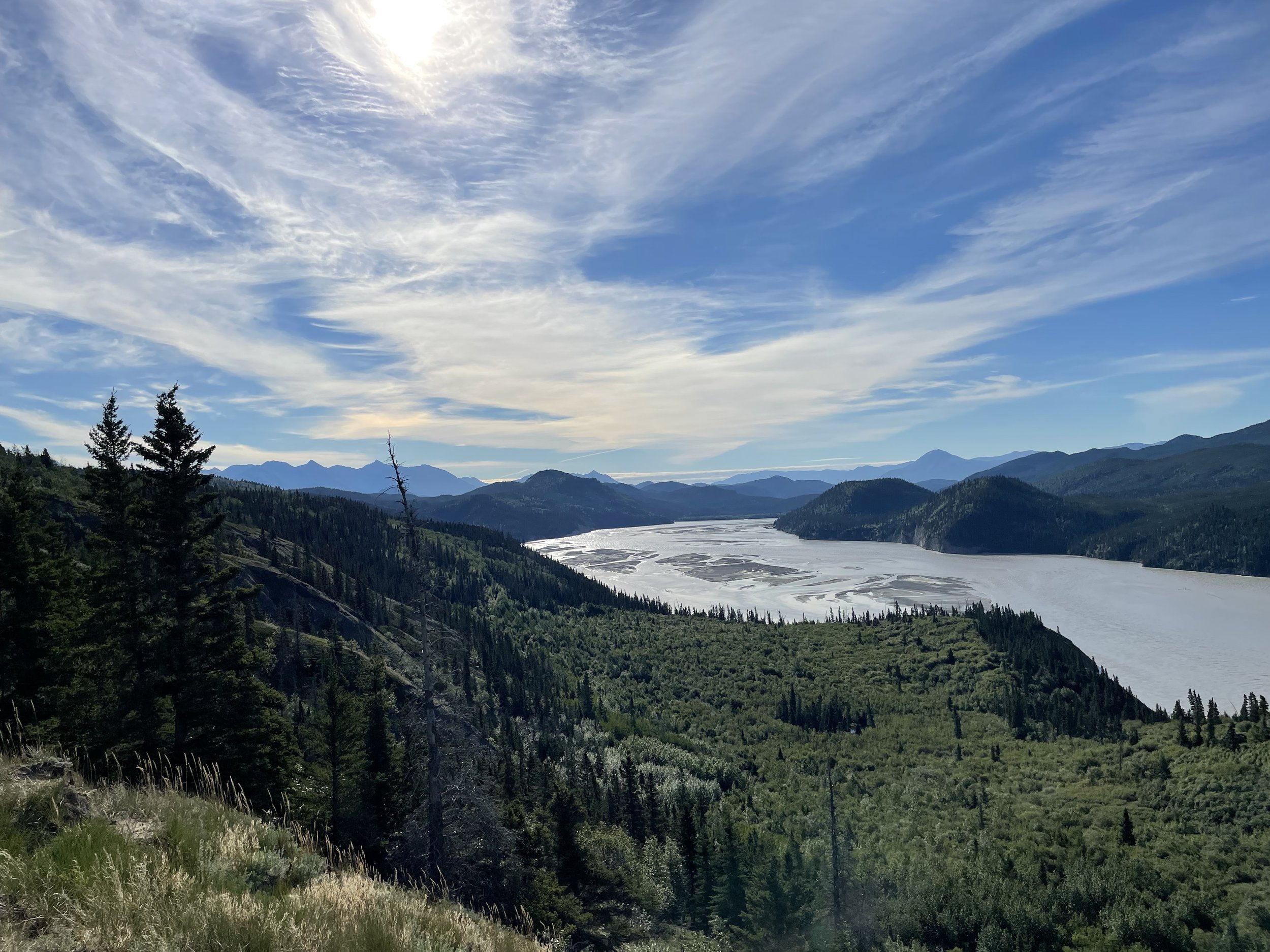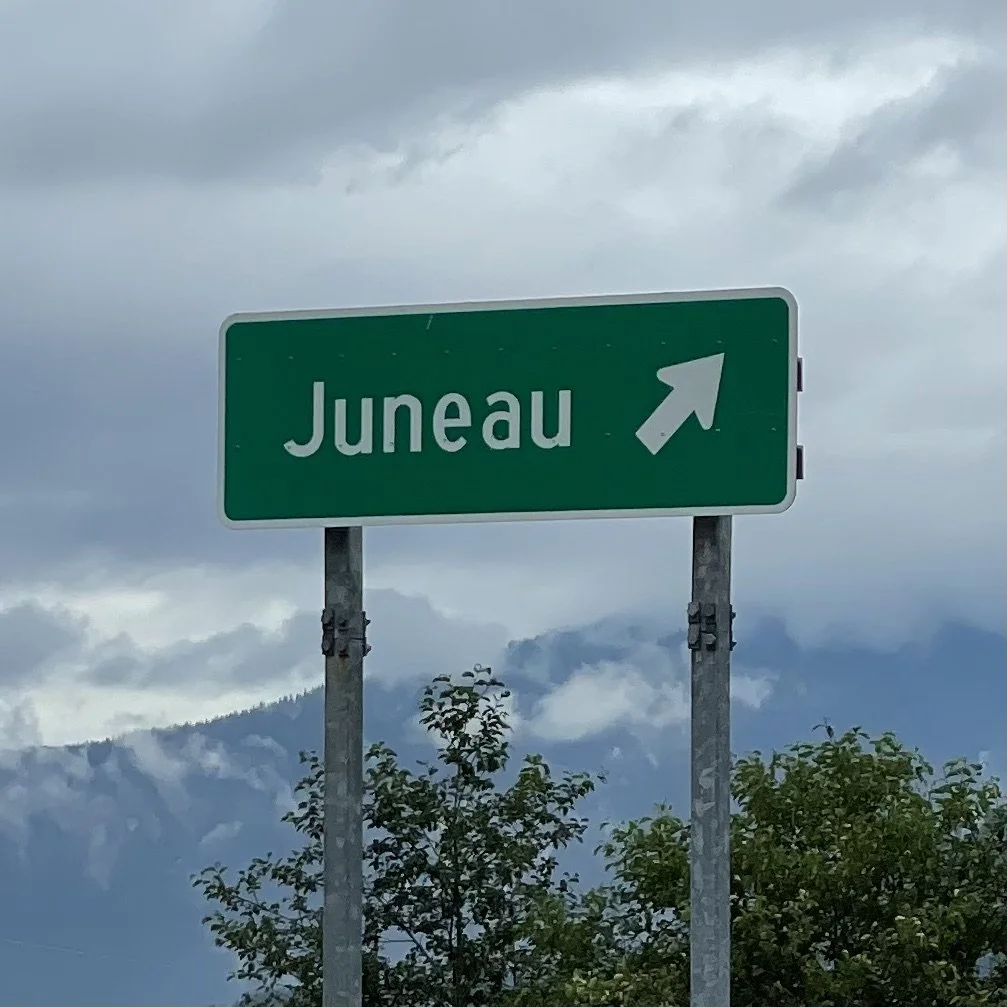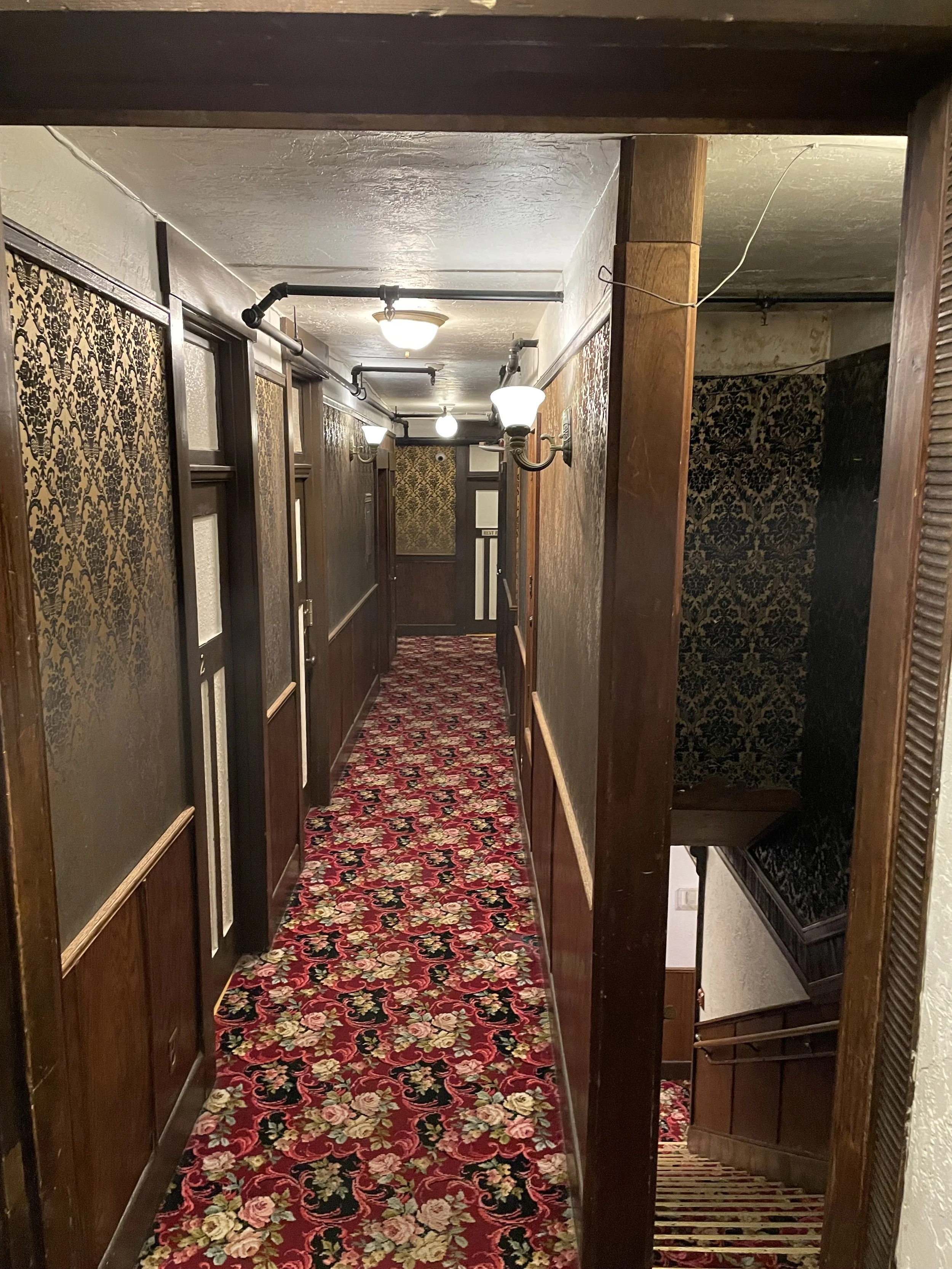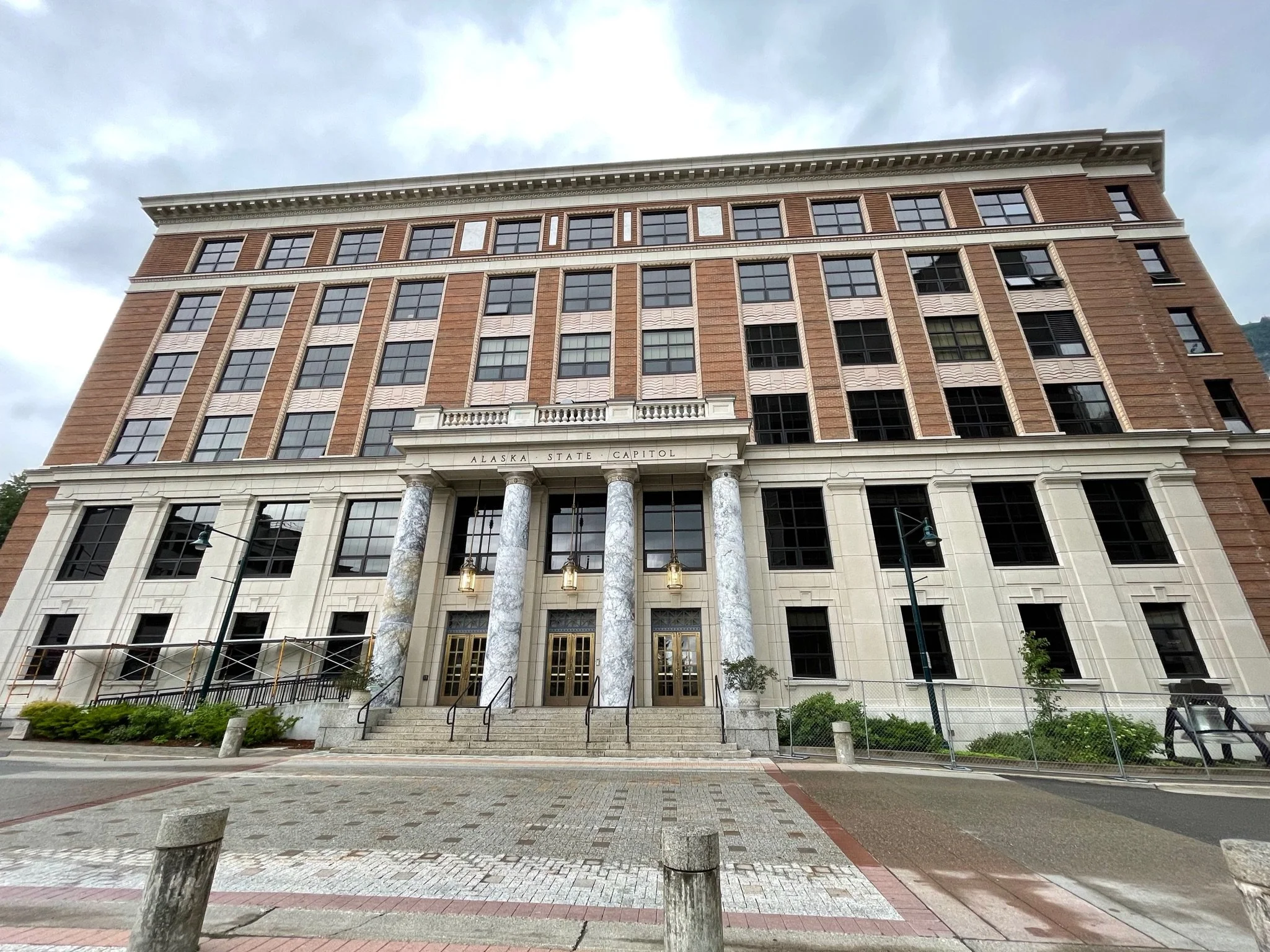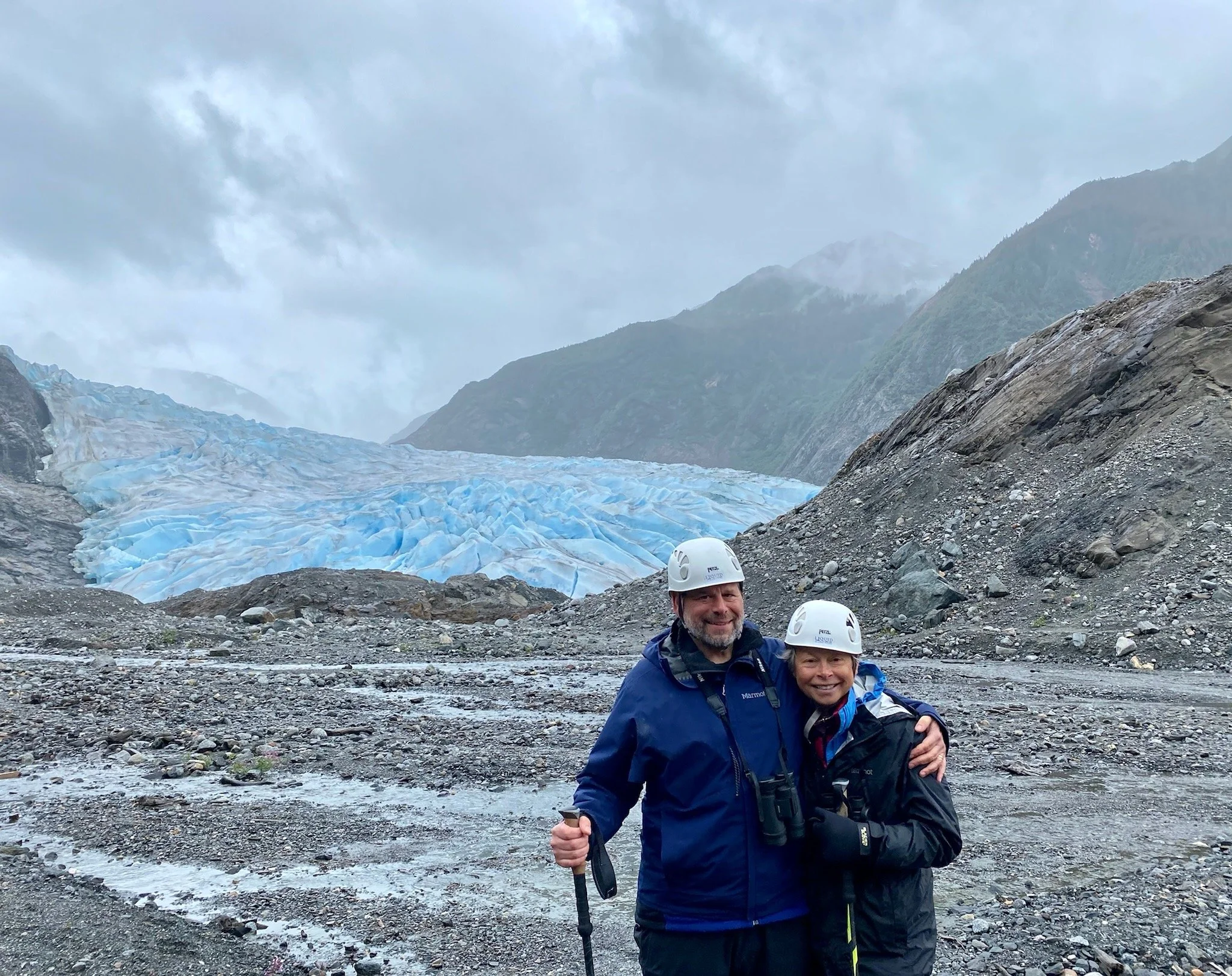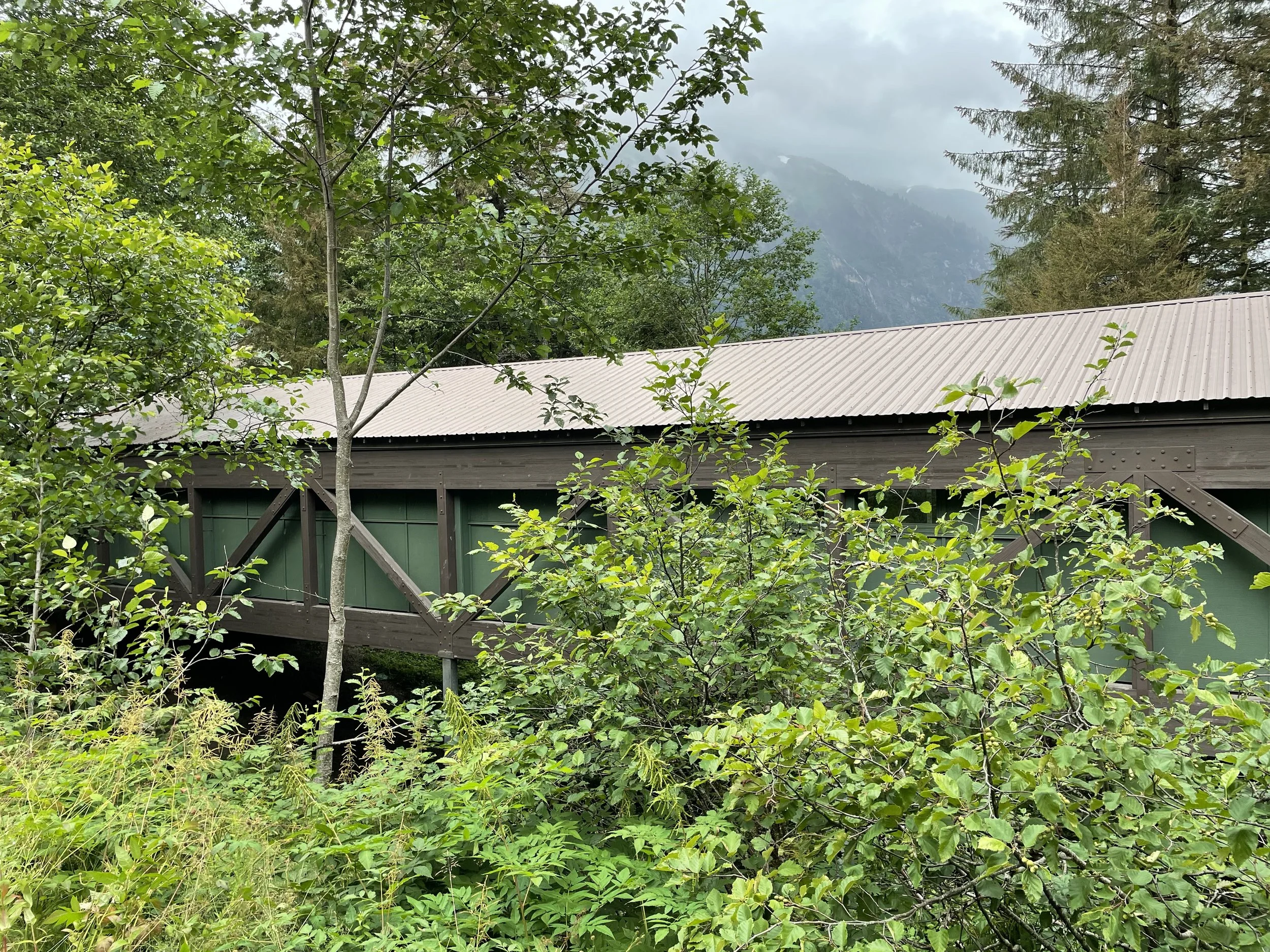Glennallen, Alaska doesn’t have a whole lot going for it. An IGA grocery store, a gas station, and the pretty decent Northern Nights Campground round out the amenities. It is, however, on the way to the ghostly towns of McCarthy and Kennecott, which are accessed via 100 kms of unpaved road through the Alaskan wilderness.
With just one ‘doughnut’ spare tire we decided to leave the driving to the Greyhound and pay someone to drive us to McCarthy. That someone turned out to be Maine woods transplant Jeff, who pulled up at our campground at 7:00 sharp in a beat up 15 passenger van. The van was covered in thick dust, and the windshield had several long cracks, but the vehicle seemed roadworthy overall, at least by Alaskan standards. We were the first to be picked up, but in short order, Jeff drove around to various cabins and motels, even to the nearby tiny airport, to pick up our fellow passengers, and soon we were on our way.
As he drove Jeff shared his story of growing up in Maine, spending up to 100 days at a time in his remote cabin with just his dog for company who, after enough days of solitude, began to hold up his end of the conversation quite nicely.
He (Jeff, not the dog) came out to visit Alaska 18 years ago and before he went home, he bought a cabin here. The following year, he returned to stay, meeting his “missus” who hailed from Minnesota and had already preceded him in Alaska by more than a decade.
Jeff lives what he calls a subsistence life, hunting (moose, elk, bear, mountain sheep and goats) and fishing (salmon what else?), building his own home and, oh yeah, driving tourists a few days a week and operating a lodge with cabins to rent. Like all other permanent Alaska residents, he also collects his share of the Alaska Permanent Fund Dividend which in 2021 was $1,114 per person according to Wikipedia (Jeff said $3,600 per person so…). This payment is just what it sounds like: the State of Alaska pays you to live here.
As we turned off the paved road, the wisdom of not bringing our own van became readily apparent. The ‘road’ is a ribbon of gravel over some kind of washboard textured packed dirt. By driving at precisely 42 miles per hour, Jeff was able to ‘float’ over the surface of the road, saving time and wear and tear on the vehicle if not on us. Float was his word; it wouldn’t have been the word I would have chosen. There were frequent potholes that rattled our teeth and threatened to shake loose a kidney or two, not to mention the times that we would pass another vehicle on that narrow road and come perilously close to that 100 foot drop off at the edge. I never would have had the nerve to go that fast and even if we hadn’t gotten a flat or wrecked the suspension on the van, it would have taken me three times as long to drive that 100 kms. Jeff did it in about 90 minutes. Along the way we saw a moose and smelled the acrid scent of a grizzly bear. But the bear chose not to make an appearance, much to our disappointment.
At McCarthy we walked across a footbridge where Dan was waiting on the other side in a little school bus to take us the remaining 6 miles to Kennecott. Suffice it to say that this road made the previous thoroughfare seem glassy smooth by comparison.
The town of Kennecott is a National Historic Landmark within the Wrangell-St. Elias National Park and Preserve. From 1909-1938 the town was the site of the Kennecott Copper mine. It was located on one of the richest copper deposits in the world.
The timing couldn’t have been better. The electrification of North America was in full swing and copper for wiring fetched a high price. Then in 1938 as the vein began to give out, the price of copper plummeted and the mine and its host town were abandoned.
Given the harshness of the climate, a surprising number of buildings remain. Most of them are unsafe to enter (they look like they could collapse at any moment) but the Park Service is trying to preserve and stabilize them.
One building you can enter is the lodge. It is not original but it is a replica of the original and it has more than 40 rooms available for guests. It also has a restaurant where we proceeded to take our lunch. The tuna melt and caprese sandwiches we shared may not have been authentic to the mining days (see below), but they were tasty and reasonably priced considering there was only one other restaurant, a food truck, in town.
After lunch we visited the museum which gave me more of an appreciation for what the men who labored here had to contend with. To say that conditions were harsh and the pay poor would be to understate the case. On display was a document adopted by the men, which was sent to the company to demand better food. There was no information about how the company responded to these demands but as I mentioned the mine was shut down the following year. Sound familiar?
I thought the letter was worth reproducing in whole at the end of this post.
The area around the mill is a sand river a kilometer wide full of tailings of many colors. This harmless looking gritty material is full of arsenic, lead, and mercury, delightful chemicals left over after the valuable stuff has been taken. The park service helpfully suggests that after walking around, you wash your hands before touching food or your mouth. They also suggest washing your shoes. It goes without saying you shouldn’t eat your shoes after visiting Kennecott.
After exhausting the museums and enjoying a short hike, we took the shuttle back to McCarthy in time to check out the famous restaurant called Potato where we had a couple of IPAs and (appropriately) some garlic rosemary curly fries. They were very tasty. Then it was time to cross the foot bridge and find Jeff for the roller coaster ride back to Glennallen.
It was after 8 pm by the time we got back though still many hours until sunset. We planned to set out early the next day for Seward on the Kenai Peninsula to try our luck with another cruise.
Barbara hoped to see a few more glaciers and to add a few more species to our list. I aspired more simply to get through the day with my breakfast inside me and not in the sea.
May 18, 1937
A meeting has been called by the undersigned group of men to discus and demand better food at the Bonanza Camp.
Moved and seconded that floor be thrown open for discussion.
Carried
Moved and seconded that discussion be closed.
Carried
(Demands)
1) That there be more fresh fruits, such as pear, bananas, grapefruit, etc., in season,
2) That the eggs be fresh,
3) That there be fresh greens three times weekly,
4) That there be more varieties of fresh meats,
5) That there be Worcestershire sauce, catsup, and jam or jelly on the table at all times and that the sour, tainted, mouldy or spoiled foods be thrown out,
6) That there be fresh fish and clams occasionally, when these are in season,
7) That there be a bigger variety of, pastries, such as cinnamon rolls, butterhorns*, etc,
8) That the meat be sent up to this camp in such a way that it can be served in some other way than in the form of hamburger or stew,
9) That there be more of a variety of food on the breakfast table, such as buckwheat cakes or French toast, and that the bacon alternate with ham and pork sausage, and
10) That a sufficiency of foods be prepared at each meal to do away with the remark, "They ain't no more".
We also wish to know why two sacks of mouldy bones, stripped of meat were sent to this camp.
We give the company reasonable time to meet these demands and request an answer within 48 hours.
Nels Konnerup
Adolph Peterson
Don Canske
Egan Petrokov
Louis Mason
Rudolf Hokanson
Steve Worbel
Fred Algren
Harold Johnson
Jack Butorac
Baio Olen
Ed Rennie
Roy Hill
W. Lahikaine
Joe Kelly
J. Billios
H. Carlson
Emil Norman
William Fullerton
Chas. Klemole
Chas. Newman
Jas. Borgen
Karl Anderson
Geo. Marhaffer
Anton Johmson
John Nedkoff
Theo. Peterson
Edward Wilber
John M. Larsen
Matt Majander
Tom Driscoll
Tom Pastovich
Warren Kimber
Andrew Phillips
John Krpon
*I had to know up what butterhorns were so I looked it up. Surprise!

